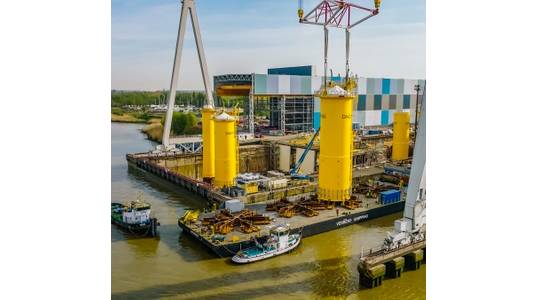
Steel construction company Smulders recently shipped out the first four of 95 transition pieces for the first phase of the 3.6 GW Dogger Bank offshore wind farm.
Smulders said earlier this week it had recently loaded out the four transition pieces at its Hoboken yard in Belgium, and shipped them to Sif’s Maasvlakte 2 terminal in Rotterdam.
The Dogger Bank transition pieces have a diameter of 8 meters and weigh about 550 tons. According to Smulders, these are the widest and heaviest transition pieces ever manufactured in Hoboken.
In November 2020, the consortium Sif-Smulders won the contract to manufacture all 190 monopiles and transition pieces for Dogger Bank A & B, the first two phases of Dogger Bank Wind Farm. In late 2021, the consortium was also awarded the contract for the third phase of the wind farm, Dogger Bank C.
The Dogger Bank wind farm, which will be located in the North Sea off the North East coast of England, is a joint venture between SSE Renewables (40%), Equinor (40%) and Eni Plenitude (20%).
Once all three phases are operational, the wind farm will be the world's largest.



